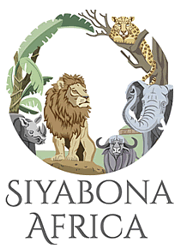
Name
Weeping Boer Bean [Schotia brachypetala]Other names: Huilboerboon, Tree Fuchsia, and African Walnut
Introduction
The beauty of the flowers is in the brightly coloured calyces (sepals), stamens and pedicels (flower stalks). The flowers produce copious amounts of nectar, which over-flows and drips or 'weeps' from the flowers and may be the origin of the common name, the Weeping Boer-bean, or Huilboerboon in Afrikaans.Description
The Weeping Boer Bean is a handsome, medium to large tree with a wide-spreading, densely branched, rounded crown. It has a single trunk that sometimes branches low down. Trees can reach a height of 22 m, but most commonly grow 11 to 16 m with a spread of 10 to 15 m. The bark is rough and brown or grey brown. The leaves are compound, with 4 to 6 pairs of leaflets, each with an entire, wavy margin. The foliage is reddish to coppery when young, turning bright green and maturing to a glossy dark green. In warm frost-free areas this tree is evergreen, but in colder regions it is deciduous, losing its leaves for a short period in winter to spring.Flowers
The flowers are rich deep red, and are produced in masses, in dense branched heads on the old wood during spring (August to November). The flowering time is somewhat irregular in that a tree in bloom may be a few metres away from one that has no sign of flowers. This irregularity is of value to the nectar feeding birds, and ensures a longer feeding season.Fruit
The fruit is a hard, flattened, woody, dark brown pod containing flattened, pale brown approximately 20 mm diameter seeds with a conspicuous yellow aril. The pods split on the tree, maturing during late summer to autumn (February to May).Uses
Schotia brachypetala attracts a wide variety of birds, animals and insects and is a noisy, hive of activity while in flower. Nectar-feeding birds, particularly sunbirds, bees and insects feed on the nectar. Insect-eating birds feed on the insects attracted by the flowers. Starlings, monkeys and baboons eat the flowers, monkeys eat the seeds, birds eat the aril on the seeds and the leaves are browsed by game and black rhino also eat the bark. The latter visitors of course are only expected in game reserves.Not only is Schotia brachypetala an exceptional ornamental tree, it also has a number of other uses. A decoction of the bark is taken to treat heartburn and hangovers. Bark and root mixtures are used to strengthen the body and purify the blood, to treat nervous heart conditions and diarrhoea, as well as for facial saunas. The seeds are edible after roasting, and although low in fat and protein they have a high carbohydrate content. Both the Bantu-speaking people and the early European settlers and farmers are said to have roasted the mature pods and eaten the seeds, a practice which they learned from the Khoikhoi.The bark can be used for dyeing, giving a red-brown or red colour. The timber is of good quality, suitable for furniture making. The sapwood is pinkish-grey and not durable unless treated. The heartwood is a dark walnut, almost black, hard, fairly heavy and termite resistant with a dense fine texture and has been much used for furniture and flooring blocks. It is also said to be excellent for all kinds of wagon wood and was chiefly in demand for wagon beams.Habitat
The Weeping Boer Bean occurs in warm dry areas in bushveld, deciduous woodland and scrub forest most often on the banks of rivers and streams or on old termite mounds.Where Weeping Boer Bean Are Found
Weeping Boer Bean are found at lower altitudes from around Umtata in the Eastern Cape, through KwaZulu-Natal, Swaziland, Mpumalanga, Limpopo and into Mozambique and Zimbabwe.
Latin name
Schotia brachypetala.The specific name brachypetala means 'having short petals' in Greek and refers to the flowers which are unique among Schotia species in that the petals are partly or completely reduced to linear filaments.

